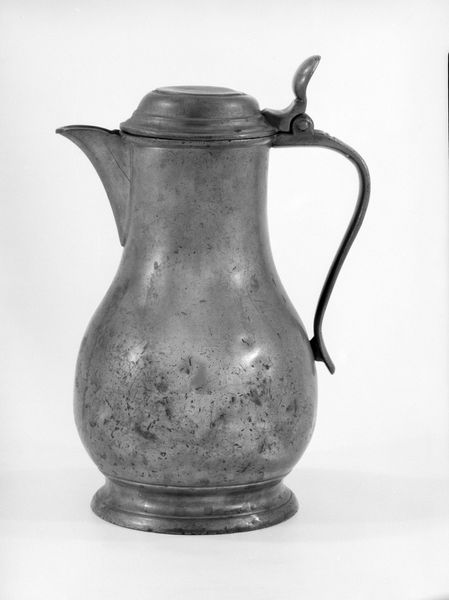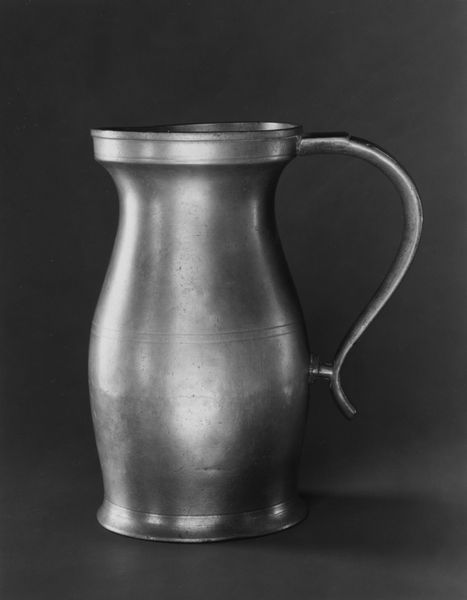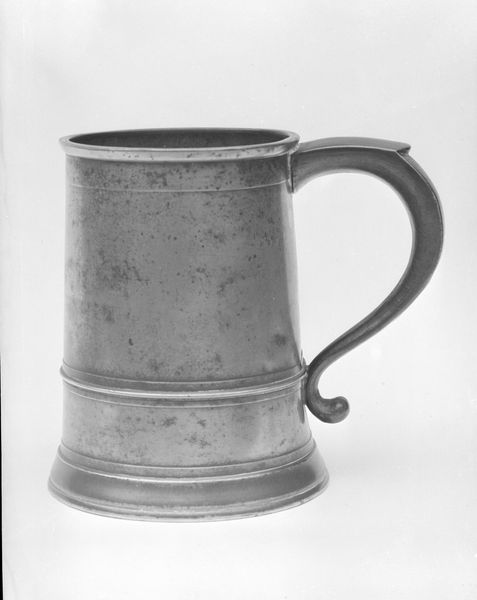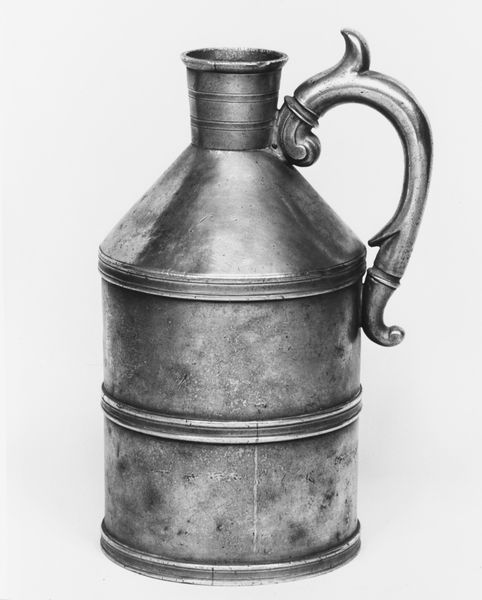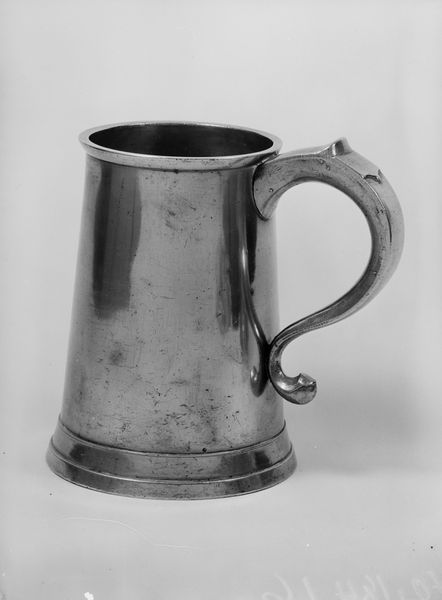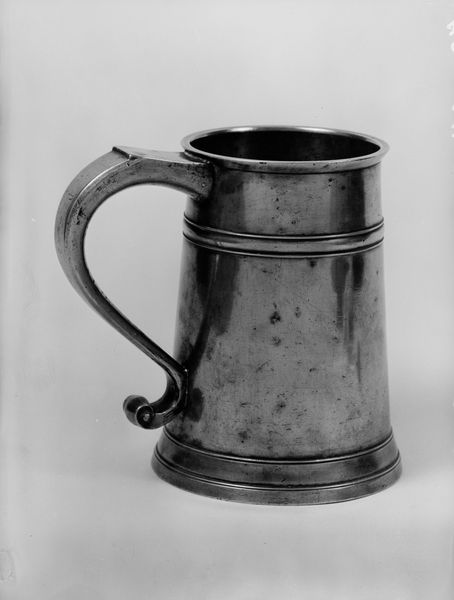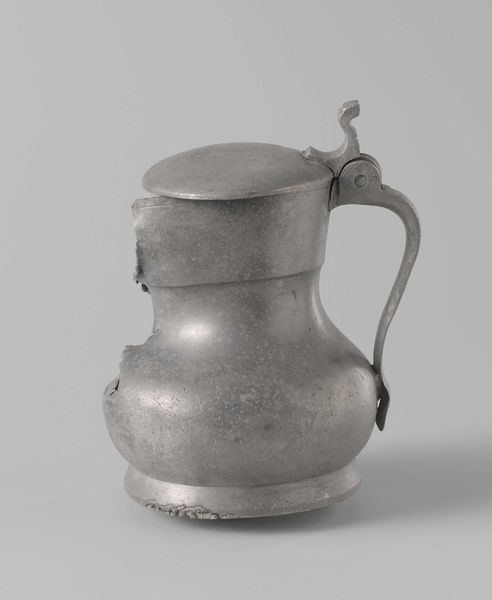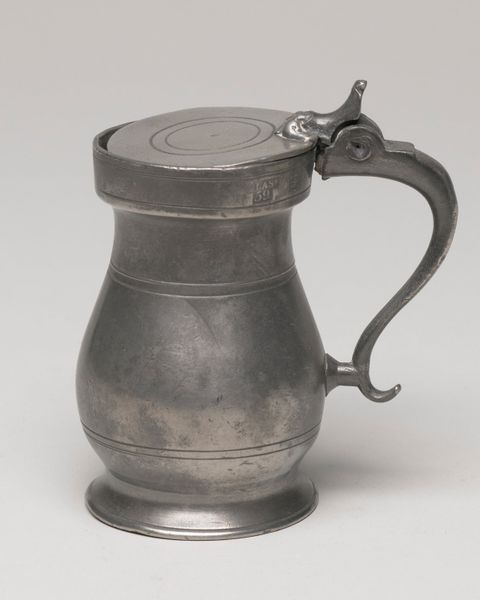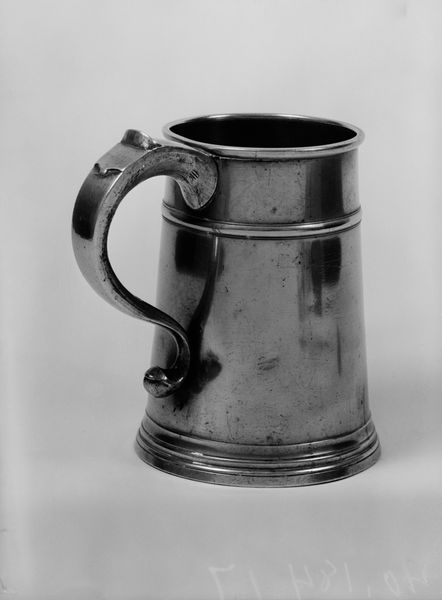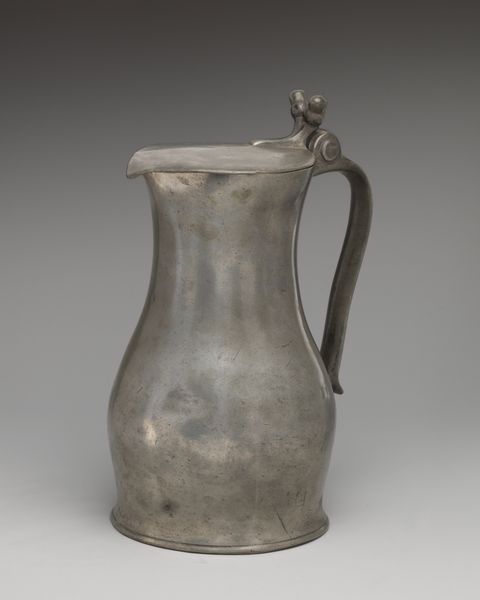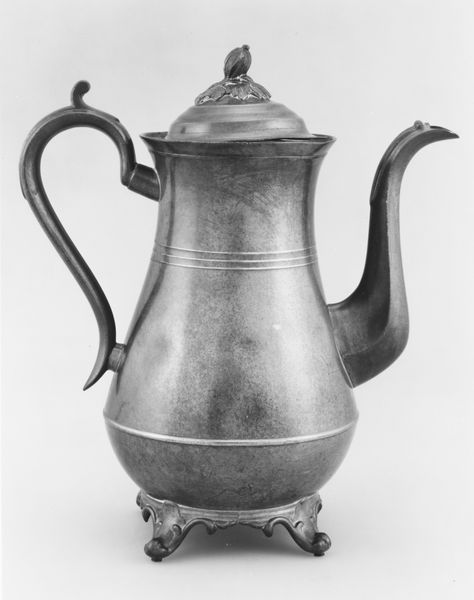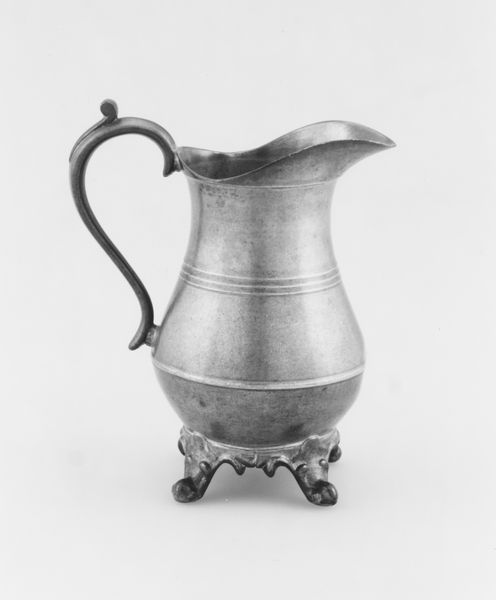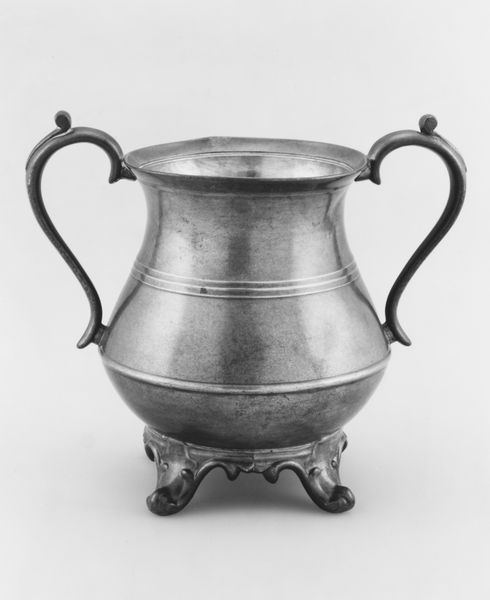
metal, sculpture
#
metal
#
sculpture
#
decorative-art
Dimensions: Overall: 11 1/4 × 6 1/4 × 5 1/2 in. (28.6 × 15.9 × 14 cm)
Copyright: Public Domain
Curator: Welcome. Today, we will explore Frédéric Reuchlin's “Measure,” a striking metal sculpture crafted between 1783 and 1793. Editor: Immediately, the restrained elegance strikes me; it's quite beautiful in its functionality, isn’t it? It has this rather humble, almost stoic presence. Curator: Precisely! Observe the meticulously balanced composition, the cylindrical forms are modulated by those concentric horizontal lines to add articulation, providing both a visual grounding, and textural interest. Editor: I'm curious about who would have used this piece. Was it someone of means? It appears well-made, but perhaps more utilitarian than ostentatious. How might this piece speak to concepts of class or labour during its time? The artistry implies care, but it is, ultimately, a container. Curator: Note how the material itself – seemingly pewter or a similar metal – mediates its function. The cold, solid form embodies precision. And it gives the vessel an air of neutrality as though the design emphasizes use. Editor: I'd also consider its symbolic purpose within the rituals of the period. The measure isn’t only about volume; it embodies the value that the act of measuring gives. A tool for commerce, but also domestic ritual. A form of regulated domestic labour. It tells a rich historical tale beyond mere aesthetics. Curator: A point well taken, one must always consider its dual being as sculpture and utensil. What seems merely ornamental is intrinsic to the sculpture’s ability to deliver its intended function. Editor: Right, its function can’t be abstracted. It tells of the value that was being poured inside, too: wealth, worth, life's sustenance. Curator: I invite listeners to return to our earlier impressions – that elegant simplicity – re-evaluate the intricate dialogue between use, design, and concept. The balance of lines, and volumes truly make the artist and this work sublime. Editor: Hopefully, examining “Measure,” we find more in this decorative object than meets the eye, and we reconsider how art always mirrors history, use, and broader cultural dialogues.
Comments
No comments
Be the first to comment and join the conversation on the ultimate creative platform.
